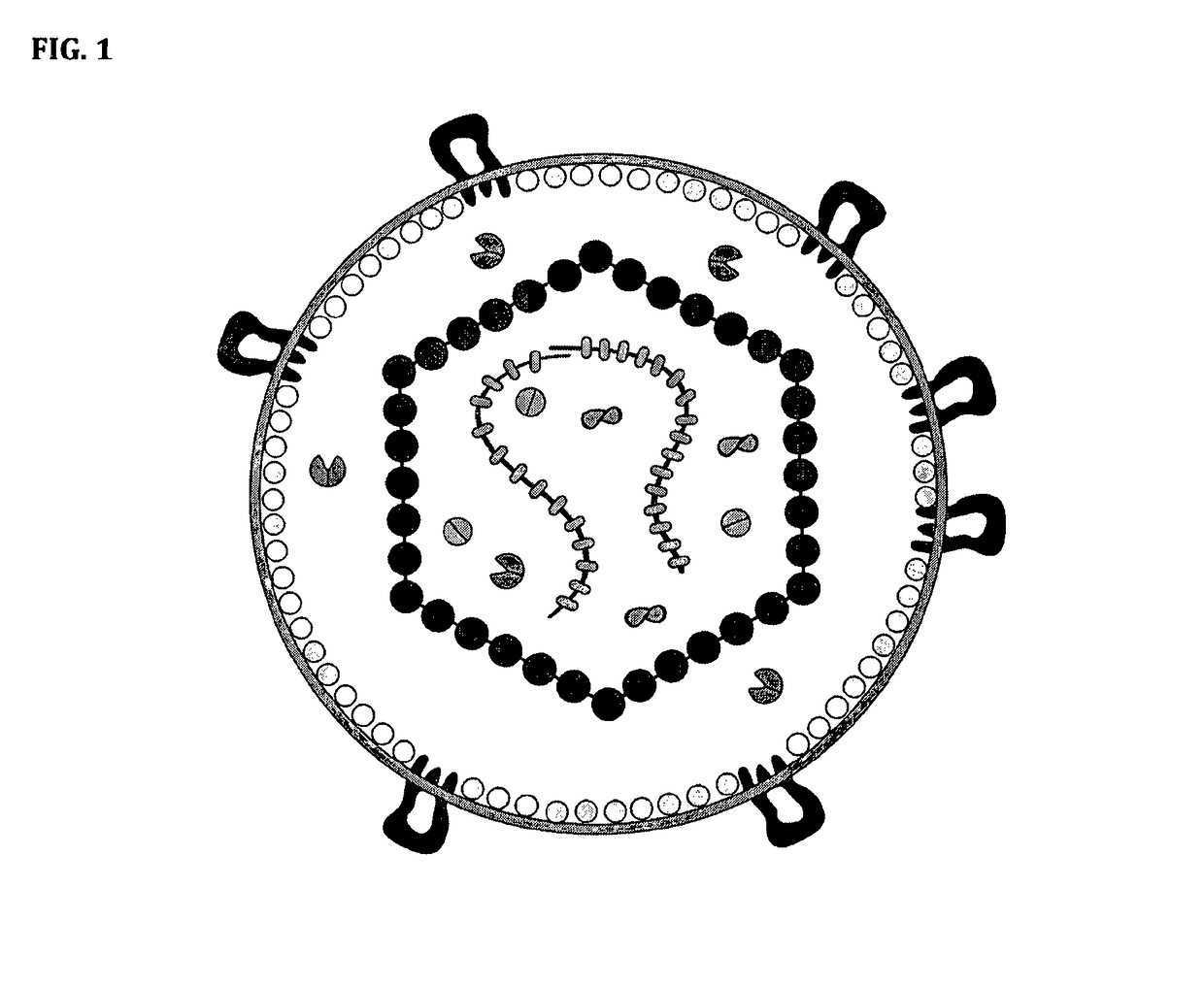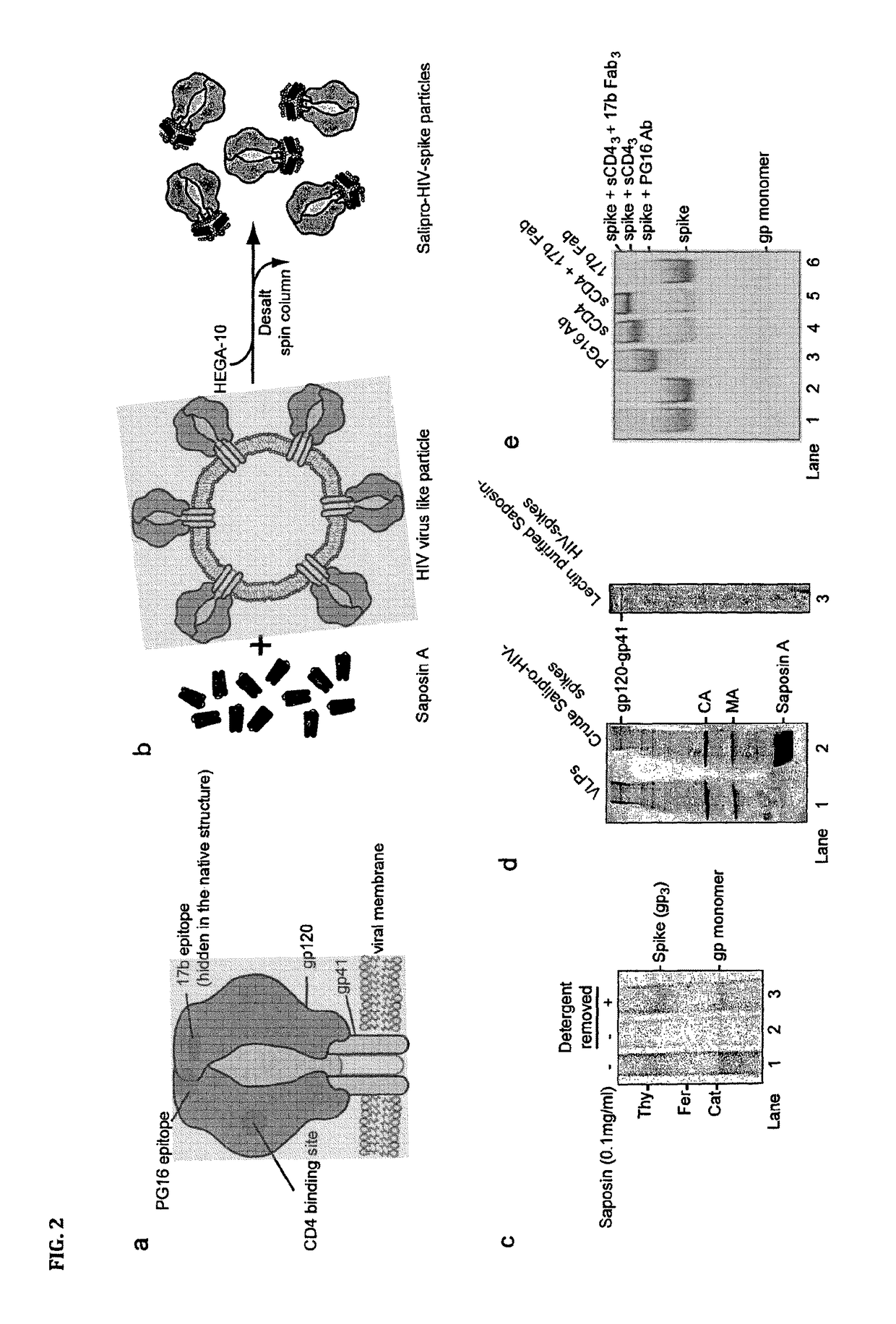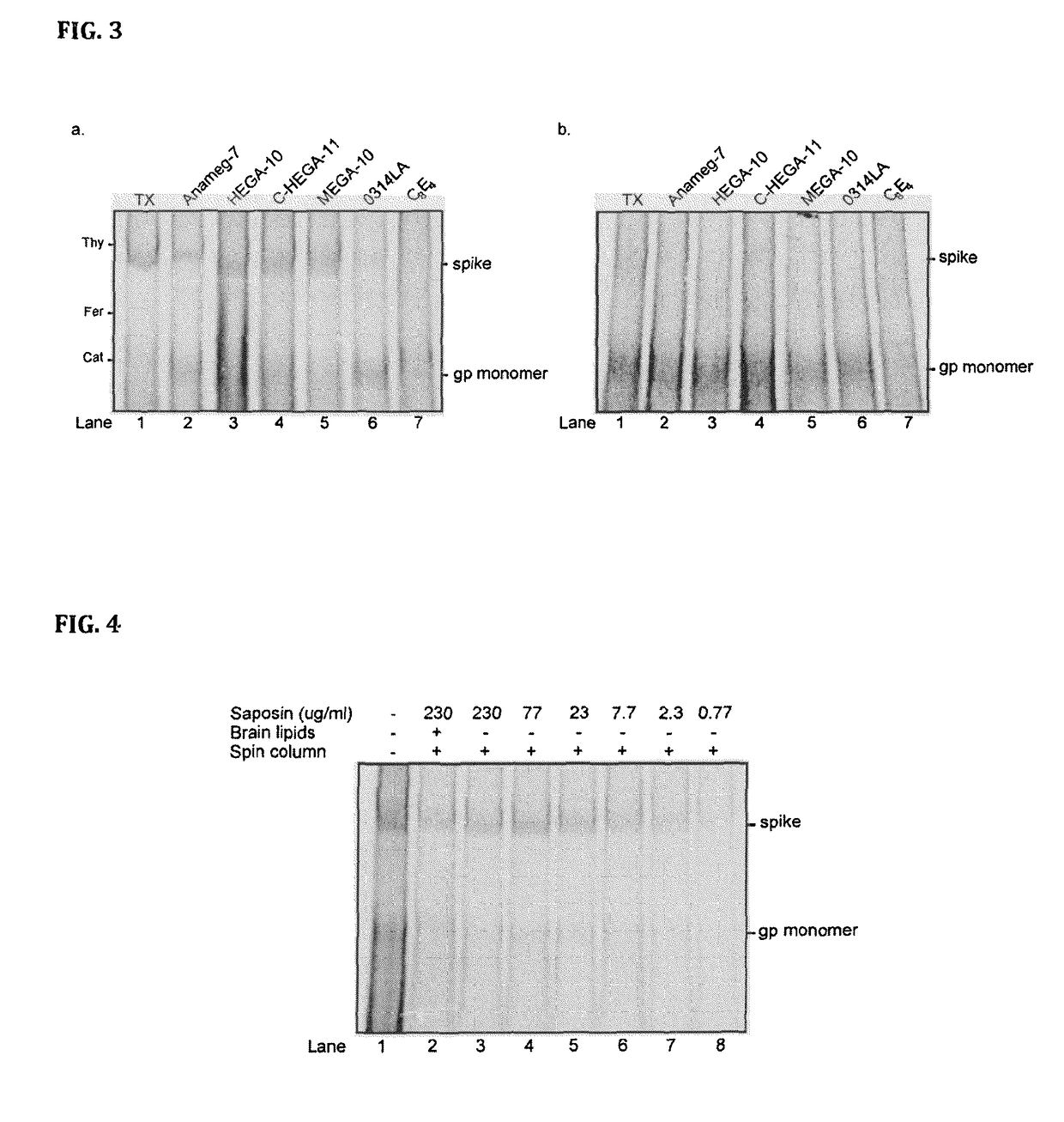Antigen and method for production thereof
a technology applied in the field of antigen and method for production thereof, can solve the problems of drug resistance, drug is only a life prolonger and not an absolute cure, and the cost of treatment is high, and the effect of reducing the number of patients
- Summary
- Abstract
- Description
- Claims
- Application Information
AI Technical Summary
Benefits of technology
Problems solved by technology
Method used
Image
Examples
example 1
[0087]Specifically, HIV-1 virus like particles (VLP) is produced by calcium phosphate-mediated DNA transfection of 293T cells. VLP released into the cell culture media are then purified by ultracentrifugation (Beckman SW55 rotor, 28,000 rpm for 17 h) in a 20-60% sucrose density step gradient. To generate saposin-spikes, the VLPs must first be solubilized by a traditional detergent and then exchanged to saposin A. This is possible to do by molecular sieving if the detergent has a high critical micelle concentration (CMC), i.e. in the mM range. Furthermore, the detergent must be mild enough to preserve the native trimeric structure of the spike during solubilization. In these experiments we use the detergent HEGA-10, with CMC at 7 mM. Accordingly, purified VLPs are lysed for 10 min on ice with 9 mM HEGA-10 in the presence of 90 μg / ml saposin A. Then HEGA-10 is removed from the sample using a Zeba desalting spin column, 7 kDa cut off (Thermo Fisher Scientific) according to the instruct...
example 2
Purification of Saposin A
[0090]Purified saposin A was prepared as follows. Saposin A protein expression was carried out using a vector with the coding region for human saposin A (SEQ ID NO: 1) inserted into a pNIC-Bsa4 plasmid and transformed and expressed in E. coli Rosetta gami-2 (DE3) (Novagen) strains. Cells were grown at 37° C. in TB medium supplemented with Tetracycline, Chloramphenicol and Kanamycin and induced with 0.7 mM IPTG. Three hours after induction, the cells were collected by centrifugation at 12.000×g for 15 min. The supernatant was discarded, the cell pellet was resuspended using lysis buffer (20 mM Hepes pH 7.5, 150 mM NaCl, 20 mM Imidazol) and disrupted by sonication. Lysates were subjected to centrifugation at 26.000×g for 30 min, the supernatant heated to 85° C. for 10 min, followed by an additional centrifugation step at 26.000×g for 30 min. Preparative IMAC purification was performed by batch-adsorption of the supernatant by end-over-end rotation with Ni Seph...
PUM
| Property | Measurement | Unit |
|---|---|---|
| temperatures | aaaaa | aaaaa |
| time | aaaaa | aaaaa |
| pH | aaaaa | aaaaa |
Abstract
Description
Claims
Application Information
 Login to View More
Login to View More - R&D
- Intellectual Property
- Life Sciences
- Materials
- Tech Scout
- Unparalleled Data Quality
- Higher Quality Content
- 60% Fewer Hallucinations
Browse by: Latest US Patents, China's latest patents, Technical Efficacy Thesaurus, Application Domain, Technology Topic, Popular Technical Reports.
© 2025 PatSnap. All rights reserved.Legal|Privacy policy|Modern Slavery Act Transparency Statement|Sitemap|About US| Contact US: help@patsnap.com



